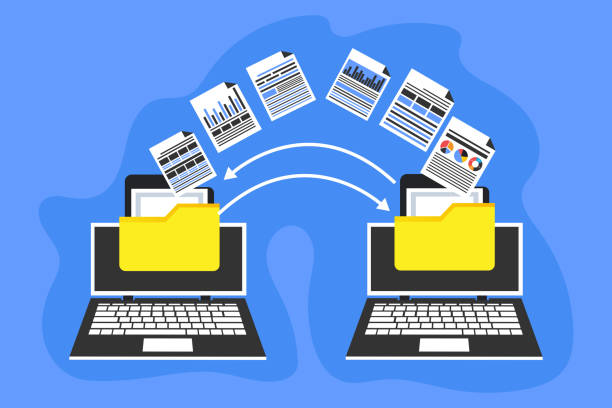It seems like there’s never a good time to update your financial systems—even if they are in desperate need of an upgrade. The headaches and time associated with migrating your historical data are enough to make any experienced hotelier hesitate.
After all, historical data isn’t merely a collection of numbers—it’s an intricate narrative of your everyday operations that informs future decisions.
And no accounting software on the market has been able to transfer over GL line item detail before so some data has always been lost in translation – that is, until now.
We are excited to reveal a new capability designed exclusively by HIA’s software development team to enable GL line level imports for the first time in the industry. This means whereas other systems only allow Trial Balance import detail, which shows the account value at the end of the month, the GL level detail allows you to see the actual activity in the account, such as why a cash account changed $50,000 in a month.
Let’s discuss the typical difficulties you might encounter while migrating your accounting data, and then show how our new capabilities can transform this process.
| Key Takeaways |
|
Hotel Financial Analysis and Historical Data
Hoteliers know the importance of historical data better than anyone else—it’s the wellspring of knowledge you draw upon to steer your business forward, mining through years of revenue, expenses, occupancy rates, and a host of other metrics to discover patterns and trends.
It’s this keen understanding of the past that enables you to craft your budget, forecast your needs, evaluate performance, and plan your strategy. However, all these insights are only as good as the data they’re drawn from.
It’s not just about having data but having accurate, complete, and accessible data.
As you navigate the labyrinth of system migration, this point rings true even louder. Transferring years of accumulated data into a new system can be complicated, to say the least.
Common Challenges in Migrating Historical Data
When it comes to migrating historical data, the path is often fraught with challenges. Some of the most common ones include:
- Data Standardization: Different systems have varying data formats and standards. This often leads to issues with compatibility and requires substantial effort to clean, standardize, and map data from the old system to the new one.
- Data Accuracy and Completeness: Data can get jumbled, lost, or incorrectly mapped during migration, leading to inaccuracies and gaps. This becomes especially prevalent with non-standardized data or when the system attempts to auto-format data to look visually appealing at the expense of accuracy.
- Inability to Export Complete Data: Sometimes, your previous system may limit the amount of data you can export due to system constraints or to maintain customer lock-in. This means you may be unable to carry over all the historical data you require.
- Time-Consuming Process: Migrating years of data is time-consuming, often requiring manual review and correction of data errors. This can slow down your migration project significantly.
While these challenges certainly have the potential to disrupt your hotel’s operations and financial management if not properly handled, they aren’t as critical as whether or not you’re going to get a Trial Balance or a full General Ledger (GL) detail.
After all, you can clean up data and spend the time manually updating records, but if you don’t have the ability to drill down into your historical data, it can create problems later on. So what’s the main difference between the two?
| Trial Balance vs. GL Detail: A Critical Differentiation |
Trial balances provide a snapshot of the accounts at the end of a period, showing a quick overview of the financial situation. However, they lack detail, offering little insight into individual transactions or specific changes over time. For example, with trial balances, you’d be able to see that your Mechanical Expenses & Repairs account changed $25,000 from one month to the next, but you won’t have the ability to see the activity that led to those changes. With GL level detail, you can see that these were elevator and escalator repairs above the service agreement, and see the recordation of service agreements, repair tickets, and more. This level of detail allows for a deeper understanding of financial activities and trends, aiding in more accurate budgeting, auditing, and decision-making processes. In many instances, having the GL detail has proven invaluable to hotel operators and owners, significantly overshadowing the simpler yet less informative trial balance. |
Overcoming Hurdles in Historical Data Import with HIA
At HIA, we recognize the importance and challenges of importing historical data in the hotel industry, which is why we developed a streamlined, user-friendly approach.
We focus on importing your most recent years of GL detail data into our platform (typically 2-3 years), so hotels can retain the transaction-level information they’ll need for auditing, decision-making, and trend analysis.
From there, we give our clients full autonomy to manage and import their own data, giving them the flexibility they need to add historical information at their own pace. For example, one of our clients wanted to import their full 20 years history into our system, and so with our handy GL Legacy Import tool they were able to do so. They now have 20 years of history accessible in the system.
This HIA import tool is a step above all other import tools in the industry, not just because of the detail it can capture, but because of it’s speed and capacity. Whereas with other companies history has to be uploaded month by month, with the HIA tool it can be imported multiple years at a time, such as 3 years at a time.
Here’s how easy it is to do:
- Open HIA’s platform and navigate to the Import GL Legacy page.
- Select the account type you want to import (the previous system you’re migrating data from, Sage, Quickbooks, DataPlus, etc.).
- Select the property you want to import data for.
- Select your posting ledger.
- Create a description that will appear on every journal entry you’ll be working on; for example, Sage Financial History.
- Select and upload your files.
That’s it! The system will do the rest automatically. If the system detects any imbalances or incorrect mapping, it will signal an alert that looks like this:


From there, you can go in and make any necessary corrections and then import all your journal transactions. Your historical data is now ready to be used in HIA’s platform to its full potential.
Additionally, the historical data can not only be referenced, but worked with. For example, if it is discovered that an expense needs to be reclassified, with HIA you can reclassify the entry, and also maintain the original entry with a note on the change, so the reclassification is made and there is an entire audit trail of adjustments for full transparency.
While we understand that migrating your accounting systems can be a daunting task, our platform and new GL Legacy Import tool makes it a more straightforward and manageable process.
So if you’re ready to make the switch towards better financial visibility and improved decision-making for your hotel operations, reach out and schedule a demo.

Director of Marketing at HIA
Elisa Fritsch, Director of Marketing at HIA, contributes 15 years of diverse sales and marketing experience from corporate to start-up environments. In the hospitality sector, she managed B2B marketing for notable companies like Choice Hotels International and Kalibri Labs. At HIA, Elisa focuses on inbound and content marketing, leveraging her industry knowledge to drive growth.










